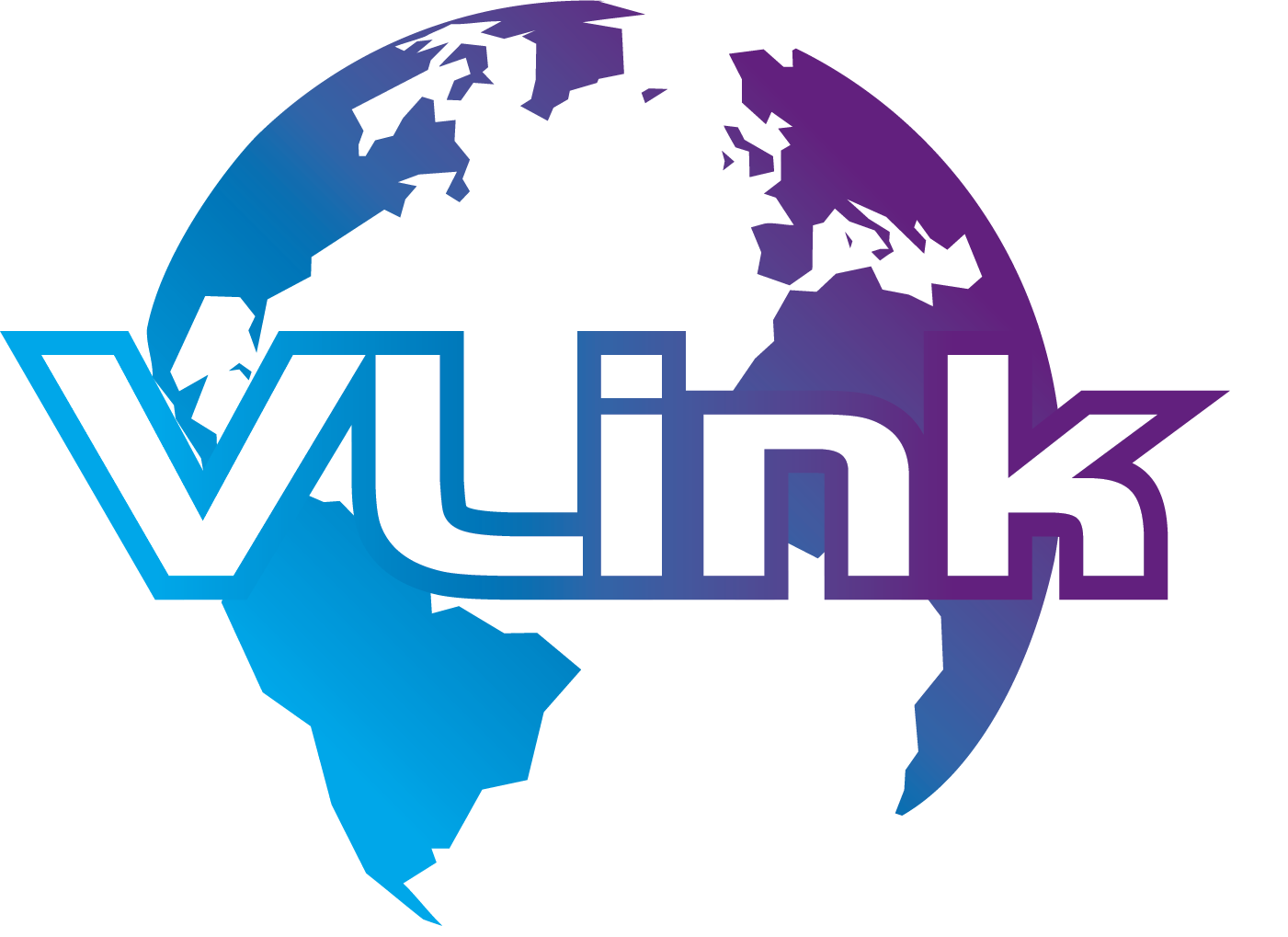Healthcare organizations are facing an unprecedented wave of cyber threats in 2025, with high-profile data breaches making headlines and the cost of attacks soaring to record levels. As hospitals, clinics, and health systems increasingly rely on digital platforms—such as Electronic Medical Records (EMR), Electronic Health Records (EHR), and telehealth—cybersecurity in healthcare has become a critical concern for leaders, practitioners, and patients alike.
The digital transformation of the healthcare industry brings immense benefits, but also exposes sensitive patient data to sophisticated adversaries. From ransomware attacks disrupting hospital operations to phishing campaigns targeting medical staff, the risks are real and growing.
The sheer volume and sensitivity of personal health information (PHI) make the healthcare sector a lucrative target for cybercriminals, driving a significant increase in healthcare cybercrime and medical data breaches. Understanding these healthcare cybersecurity risks is the first step toward building a robust defense.
This comprehensive blog examines why healthcare is particularly vulnerable, provides real-world examples of recent breaches, identifies the most common cybersecurity threats, and offers actionable best practices to safeguard your organization.
Why Is Healthcare the #1 Target for Cyberattacks?
The healthcare sector is uniquely attractive to cybercriminals, and several factors converge to make it the top target for cyberattacks in 2025:

Outdated IT Infrastructure and Legacy Systems:
High-Value Personal Health Data:
Pressure to Maintain Uninterrupted Care
Hospitals and clinics cannot afford downtime—any disruption can be life-threatening. This urgency often leads organizations to prioritize restoring systems quickly over thorough security investigations, making them more likely to pay ransoms and less likely to learn from incidents. This creates a powerful incentive for criminals to deploy ransomware attacks in healthcare, knowing their targets are under immense pressure to recover.
Understaffed or Underfunded IT Teams:
Compared to other sectors, healthcare consistently underinvests in cybersecurity infrastructure and skilled personnel. Many organizations lack comprehensive security programs or have insufficient budgets for threat monitoring and employee training. This often results in a critical shortage of healthcare cybersecurity professionals, leaving organizations vulnerable to exposure.
Connected Medical Devices (IoMT) and IoT Expansion:
The proliferation of Internet of Medical Things (IoMT) devices—such as connected pacemakers, infusion pumps, and diagnostic equipment—has significantly expanded the attack surface. Many of these devices, while enhancing patient care, are not designed with robust security controls, making them easy targets for attackers seeking to disrupt care or steal data. This creates medical device security risks that are difficult to manage without specialized expertise.
Complex Supply Chains and Third-Party Risks:
Healthcare organizations are increasingly relying on a vast network of third-party vendors, ranging from billing services to specialized software providers. Each vendor represents a potential entry point for attackers if their security posture is not rigorously vetted. Supply chain attacks in healthcare are a growing concern, as a breach at a single vendor can impact numerous healthcare providers.
Top Reasons Healthcare Is Vulnerable
- Sensitive patient records
- Legacy software systems
- Connected medical devices (IoMT)
- Underfunded cybersecurity programs
- Pressure for continuous operation
- Complex third-party ecosystems
The convergence of these factors makes healthcare organizations a prime target for cybercriminals, who are increasingly leveraging advanced tactics to exploit every possible vulnerability, leading to a surge in cyber threats in healthcare.
Real-World Examples of Healthcare Cyberattacks
The year 2025 has already seen a disturbing number of high-profile cyber incidents, illustrating the escalating threat landscape.
Case Study 1: Change Healthcare Ransomware Attack (2024)
In February 2024, Change Healthcare, a subsidiary of UnitedHealth Group, suffered the largest healthcare data breach ever recorded. A ransomware group encrypted files and stole the protected health information (PHI) of approximately 190 million patients across the United States. The attackers demanded—and received—a $22 million ransom, yet still released the stolen data.
The resulting outage lasted several weeks, disrupting operations for healthcare providers and insurers nationwide, causing an estimated $872 million in losses for UnitedHealth Group in the first quarter of 2024 alone. The breach prompted a federal investigation and a class-action lawsuit, highlighting the sector’s vulnerability to large-scale ransomware attacks in healthcare. This incident served as a stark reminder of the critical need for robust healthcare data protection and cyber resilience in healthcare.
Case Study 2: Yale New Haven Health System (2025)
In April 2025, Yale New Haven Health System detected unusual activity in its IT systems, leading to a data breach that compromised the records of millions of patients.
The breach was traced to a hacking incident, which resulted in operational downtime and a significant reputational impact for one of Connecticut’s largest health systems. This event highlighted the importance of proactive threat detection and prompt incident response planning in healthcare.
Case Study 3: Frederick Health Medical Group Ransomware (2025)
A ransomware breach at Frederick Health Medical Group in April 2025 put nearly a million patient records at risk. The attackers exploited vulnerabilities in the organization’s EHR systems, resulting in service disruptions and necessitating urgent restoration efforts.
The breach underscored the critical need for robust cybersecurity defenses in healthcare settings, particularly regarding EHR security and the protection of electronic health records.
Case Study 4: Major Hospital Network Ransomware (2025)
In another incident in 2025, a major hospital network in the US was targeted by a sophisticated ransomware attack, which exploited weak system defenses and demanded a substantial ransom to unlock vital medical records.
This led to significant operational disruption, forcing patient care to rely on paper workflows and highlighting the critical importance of business continuity planning in healthcare cybersecurity. The escalating frequency and severity of these attacks demonstrate that no organization, regardless of size or reputation, is immune.
The Cost of Breaches
- The average cost per healthcare breach is $11.45 million (2024 IBM Cost of a Data Breach Report), making healthcare the most expensive industry for data breaches.
- Percentage of organizations hit by ransomware taking over a week to recover: 78%
- Number of individuals affected by healthcare data breaches in the first half of 2025: Nearly 30 million.
- The total global cost of cybercrime is projected to reach $10.5 trillion annually by 2025.
The operational, financial, and reputational impacts of these attacks are severe, often resulting in regulatory fines, patient lawsuits, and loss of public trust. The indirect costs, such as loss of patient trust and decreased patient volume, can be even more substantial, underscoring the importance of maintaining patient data security and adhering to best practices in healthcare cybersecurity.
Most Common Cyber Threats in Healthcare
Modern healthcare organizations face a diverse array of cyber threats. The most prevalent in 2025 include:

Ransomware in Healthcare: A Growing Crisis
Ransomware has emerged as one of the most damaging cyber threats facing healthcare organizations. Attackers use highly sophisticated techniques—including “double extortion,” where they steal and threaten to leak data before encrypting systems and demanding ransom. The healthcare sector saw a 300% increase in ransomware attacks in just the past several years, and 67% of providers reported being targeted by ransomware in the previous 12 months.
In 2024, ransomware accounted for 31% of healthcare data breaches, impacting millions of patients and costing organizations tens of millions in ransom, recovery, and lost operations. The growth of Ransomware-as-a-Service (RaaS) has allowed even novice criminals to launch destructive attacks. After suffering an incident, 78% of healthcare organizations required a week or more to resume normal operations, emphasizing the severe operational and patient care consequences of these attacks.
Insider Threats: The Hidden Danger
Cybersecurity threats in healthcare aren’t limited to external actors. Insider threats—whether malicious or accidental; constitute a significant and persistent risk, with 61% of healthcare data breach incidents attributed to negligent employees. Common vulnerabilities include falling prey to phishing scams, handling data improperly, or using weak passwords.
Some breaches are malicious, involving disgruntled or compromised staff actively leaking or abusing patient information. The high-stress, fast-paced healthcare environment leaves staff particularly susceptible to social engineering. Regular, interactive cybersecurity awareness training can decrease this risk by as much as 70%, yet many organizations underinvest in these critical education programs.
Medical Devices and IoT: Weak Spots in Security
The rapid adoption of Internet of Medical Things (IoMT) devices—such as connected infusion pumps, diagnostic equipment, and wearable monitors—has expanded the attack surface across healthcare environments. Many of these devices still run outdated software or lack basic security controls, making them easy targets for attackers aiming to disrupt care or steal sensitive data.
Industry forecasts indicate that by 2025, 70% of medical device breaches will be linked to legacy or unmanaged IoT assets. Protecting these devices requires network segmentation, robust device inventories, continuous patching, and specialized IoMT monitoring solutions to minimize vulnerabilities.
Phishing and Spear-Phishing Attacks
Phishing remains a top entry point for malware and data theft in healthcare, with the sector losing an average of $9.77 million per phishing-related incident in 2024. Sophisticated spear-phishing and business email compromise (BEC) scams have grown dramatically, with BEC incidents up more than 1,300% in recent years.
Attackers craft convincing emails using publicly available staff information, increasing the success rate of these scams. Regular, scenario-based phishing awareness training and ongoing simulated tests are crucial for building a resilient human firewall and reducing the risk of credential theft or inadvertent data exposure.
Cloud and Supply Chain Vulnerabilities
As healthcare organizations migrate to cloud platforms and rely on third-party vendors, cloud misconfigurations and supply chain attacks have become increasingly common. Attackers exploit weak links in the supply chain to gain access to sensitive data. The rise of multi-cloud environments further complicates cloud security in healthcare, requiring specialized expertise in cloud security best practices.
Zero-Day Exploits: Unknown Threats
Cybercriminals are constantly searching for and exploiting zero-day vulnerabilities – flaws in software or hardware that are unknown to the vendor and for which no patch exists. These attacks are particularly challenging to defend against and require advanced threat intelligence and proactive vulnerability management strategies.
Consequences of Cyberattacks in Healthcare
The fallout from a cyberattack in healthcare extends far beyond financial losses:
Financial Costs:
Healthcare breaches are the most expensive across all industries, averaging $11.45 million per incident. Costs include ransom payments, regulatory fines (such as HIPAA fines, GDPR penalties, and HITECH), legal fees, recovery expenses, and increased cyber insurance premiums. The Change Healthcare breach alone demonstrated the potential for an astronomical financial impact.
Patient Safety and Trust Erosion:
Disruptions to clinical operations can delay or prevent critical care, putting patient lives at risk. Breaches erode trust between patients and providers, potentially leading to lost business and reputational damage. When patients lose faith in a healthcare provider's ability to safeguard their most sensitive information, it can have long-lasting consequences for both the individual and the organization. This loss of trust impacts patient privacy and the overall healthcare ecosystem.
Compliance Risks:
Healthcare organizations are subject to strict regulations, including HIPAA in the US and GDPR in Europe. Breaches can result in significant penalties and increased scrutiny from regulators. Non-compliance can result in substantial fines and legal liabilities, underscoring the importance of healthcare regulatory compliance.
Operational Downtime:
Many hospitals report weeks of downtime following major attacks, with 78% of organizations hit by ransomware taking longer than a week to recover. This downtime impacts everything from scheduling appointments to delivering critical patient care, creating a cascading effect throughout the healthcare system. Business continuity and disaster recovery plans are crucial for minimizing disruptions.
Legal Ramifications:
Beyond regulatory fines, healthcare organizations frequently face class-action lawsuits from affected patients, resulting in substantial legal costs and potential settlements. This further exacerbates the financial burden and reputational damage.
Best Practices for Healthcare Cybersecurity in 2025
To defend against rising threats, healthcare organizations must adopt a proactive, layered approach to cybersecurity. Here are the essential best practices for strengthening healthcare cybersecurity posture:

1. Conduct Regular Risk Assessments:
Identify vulnerabilities in systems, networks, and workflows to enhance security. Regular assessments help prioritize remediation efforts and ensure compliance with regulatory standards, such as HIPAA. A comprehensive security risk assessment in healthcare should be a dynamic and ongoing process, not a one-time event.
Regularly evaluate vulnerabilities across all systems, not just as a one-off exercise, but as a continuous process to prioritize remediation and sustain HIPAA/GDPR compliance.
2. Implement Role-Based Access Control (RBAC):
Limit access to sensitive data based on job roles and responsibilities. RBAC minimizes the risk of unauthorized access and reduces the impact of insider threats. The principle of least privilege ensures that users only have access to the information and systems necessary for their job functions. This is a cornerstone of effective access control in healthcare. Restrict sensitive data access strictly by job function, regularly reviewing permissions and following the principle of least privilege.
3. Encrypt Data at Rest and in Transit:
Use strong encryption protocols to protect PHI both when stored (at rest) and transmitted (in transit). Encryption is a critical safeguard against data theft and regulatory penalties. This is a fundamental aspect of healthcare data encryption.
4. Train Staff on Phishing and Social Engineering:
Regular, interactive training helps employees recognize and respond to phishing attempts and other social engineering tactics. Simulated phishing exercises can reinforce learning and build a stronger human firewall. Cybersecurity awareness training for healthcare is one of the most effective defenses against cyber threats.
Offer regular, interactive sessions and simulated phishing/social engineering drills to help employees recognize and respond to evolving threats.
5. Use Multi-Factor Authentication (MFA) Universally:
MFA adds an extra layer of security, making it harder for attackers to compromise accounts, even if credentials are stolen. Implement MFA across all systems, applications, and devices that access sensitive data. This is a critical component of healthcare identity and access management. Apply MFA universally across applications, databases, remote access portals, and administrative interfaces to raise the barrier against unauthorized access.
6. Maintain Updated Backup and Recovery Protocols:
Frequent, secure, and isolated backups ensure that data can be restored quickly in the event of a ransomware attack, system failure, or natural disaster. Test recovery plans regularly to ensure effectiveness and establish clear data backup and recovery strategies. Make frequent, secure, isolated backups—then test restore and failover procedures to guarantee operational continuity during an attack.
7. Monitor and Patch Systems Continuously:
Deploy advanced monitoring tools, including Security Information and Event Management (SIEM) and Endpoint Detection and Response (EDR), to detect suspicious activity and apply security patches promptly to close known vulnerabilities. This proactive approach to vulnerability management and patching is non-negotiable.
8. Secure Medical Devices and IoMT:
Inventory all connected devices, segment networks to isolate IoMT devices from critical IT infrastructure, and work closely with vendors to ensure timely updates and security patches. Consider network segmentation for IoMT security. Keep a comprehensive inventory, segment networks, and collaborate with vendors for timely security patching and vulnerability management.
9. Establish and Test an Incident Response Plan:
Healthcare organizations must develop and regularly test a comprehensive incident response plan tailored to their unique operational needs. This plan should define clear roles, communication protocols, and steps for rapid isolation and containment of affected systems to prevent further damage. It must balance swift threat mitigation with maintaining essential clinical services through fallback procedures and redundancies.
PRO TIPS:- Regular, secure backups and frequent recovery tests are critical to ensure quick restoration. After an incident, a thorough post-incident review should capture lessons learned and drive continuous improvements. Ensuring compliance with HIPAA and other regulations throughout the process is essential. Well-rehearsed and actionable response plans significantly minimize operational disruption and protect patient data in healthcare environments.
10. Partner with Trusted Security Providers:
Engage with cybersecurity experts who understand the unique challenges of healthcare and can provide 24/7 monitoring, threat intelligence, managed security services (MSSP), and rapid response capabilities. Leveraging external expertise can fill gaps in internal resources. Leverage external MSSPs for 24/7 monitoring, advanced AI-based threat detection, and compliance expertise to fill in-house capability gaps.
11. Adopt a Zero Trust Architecture:
Move away from perimeter-based security to a "never trust, always verify" model. This means verifying every user and device attempting to access network resources, regardless of whether they are inside or outside of the network. Zero-trust security in healthcare is an emerging best practice.
How to Choose the Right Healthcare IT Security Partner
Selecting a security partner is a critical decision for healthcare organizations. A good partner can provide invaluable expertise and support in navigating the complex cybersecurity landscape.
Key Qualities
HIPAA and GDPR Compliance Expertise:
Strict compliance with regulations like HIPAA (U.S.) and GDPR (EU) remains both a legal obligation and a vital component of trust. However, 73% of healthcare providers still rely on legacy IT systems, exposing them to security weaknesses and frequent compliance failures. Common vulnerabilities include insufficient access controls, weak or outdated encryption, limited logging, and inadequate asset inventories.
The sector has seen major HIPAA violations involving millions of dollars in penalties for issues like unencrypted devices, lack of risk assessments, and delayed breach notifications. Comprehensive, ongoing audits and updated documentation are essential for regulatory safety.
24/7 Monitoring and Incident Response:
Around-the-clock monitoring and rapid response capabilities are essential for minimizing the impact of attacks. Look for partners with a dedicated Security Operations Center (SOC) and clear Service Level Agreements (SLAs).
Proven Track Record and Healthcare Focus:
Look for vendors with extensive experience in the healthcare sector and a proven track record of successful threat mitigation tailored to medical environments. They should understand the unique challenges of healthcare IT security solutions.
Comprehensive Service Offering:
The partner should offer a full suite of services, including risk assessments, penetration testing, managed detection and response (MDR), security awareness training, and compliance consulting.
Proactive Threat Intelligence:
A strong partner will leverage up-to-date threat intelligence to anticipate new attacks and proactively strengthen defenses.
Questions to Ask Potential Vendors
- What is your experience specifically with healthcare cybersecurity, and can you provide case studies that are tailored to the healthcare industry?
- How do you ensure HIPAA and GDPR compliance for your clients? What services do you offer to help us meet these regulations?
- What is your average response time to detected incidents, and what is your incident response process?
- How do you manage threat intelligence and implement proactive defense strategies in healthcare environments?
- Can you provide references from other healthcare clients that we can contact for verification?
- What level of visibility and reporting will we receive on our security posture?
- How do you manage security for connected medical devices (IoMT)?
- What is your approach to managing third-party vendor risks?
Future of Healthcare Cybersecurity: What to Expect
The cybersecurity landscape in healthcare is evolving rapidly. Here’s what’s on the horizon for 2025 and beyond, shaping the future of healthcare data security:

AI in Threat Detection and Response
Artificial intelligence services are increasingly utilized to detect anomalies, automate threat response, and analyze vast amounts of security data in real-time. AI-powered tools can identify zero-day attacks, predict potential breaches, and reduce response times. AI can also enhance behavioral analytics for insider threat detection and improve the efficiency of security operations centers (SOCs) through AI-powered cybersecurity solutions for healthcare.
Blockchain for Medical Record Security
Blockchain technology offers secure, tamper-proof storage of medical records, enhancing data integrity and patient privacy. Its decentralized and immutable nature can provide a robust framework for managing patient data securely, enabling controlled access and auditing. While still in its early stages for widespread adoption, blockchain in healthcare data management holds significant promise for improving patient data integrity.
Stricter Regulatory Changes and Enforcement
Expect even stricter regulations and enforcement around data protection, with governments worldwide updating cybersecurity requirements for healthcare providers. This includes potential updates to existing laws, such as HIPAA and GDPR, as well as the introduction of new regional or national cybersecurity mandates specific to critical infrastructure, including healthcare. Evolving healthcare compliance standards will be a constant.
Rise in Cyber Insurance and Risk-Sharing
More organizations are turning to cyber insurance to mitigate financial risk, and risk-sharing frameworks are emerging to distribute the burden of major incidents. However, obtaining healthcare cyber insurance is becoming more challenging, with insurers demanding higher premiums and more stringent cybersecurity postures from applicants. This trend emphasizes the importance of robust cyber resilience strategies.
Focus on Human Factor and Training
While technology is crucial, the human element remains the weakest link. Future strategies will place even greater emphasis on advanced and continuous cybersecurity training, with a focus on developing a strong security-conscious culture within healthcare organizations. This includes gamified training, immersive simulations, and personalized learning paths.
Enhanced Supply Chain Security
Given the increasing number of supply chain attacks, healthcare organizations will implement more rigorous vetting processes for third-party vendors and demand higher security standards from their partners. This includes implementing Business Associate Agreements (BAAs) with strong security clauses and conducting regular third-party risk assessments.
Quantum Computing's Impact
As quantum computing advances, the potential for it to break current encryption standards becomes a long-term concern. While not an immediate threat for 2025, post-quantum cryptography research and development will become increasingly important for protecting sensitive healthcare data in the future.
Secure Your Healthcare Data: The VLink Cybersecurity Advantage
In today's landscape, robust cybersecurity in healthcare is absolutely essential. At VLink, we recognize the vital importance of safeguarding patient data and ensuring operational continuity. Our comprehensive cybersecurity services are specifically designed for the healthcare industry, offering advanced, multi-layered defense.
We leverage cutting-edge technologies, including advanced ML in cybersecurity, to provide proactive and intelligent protection. Our Machine Learning algorithms continuously analyze data to identify anomalies and predict potential threats, detecting sophisticated attacks like ransomware and phishing before they cause significant damage. This ML-powered approach enhances threat detection and automates rapid response.
VLink's healthcare cybersecurity approach includes:
- Proactive Threat Detection: Using AI/ML in cybersecurity to identify suspicious patterns in real-time.
- Comprehensive Data Protection: Implementing strong encryption and access controls for patient health information (PHI).
- Compliance Assurance: Ensuring adherence to regulations like HIPAA and GDPR with automated auditing.
- Managed Security Services: Offering 24/7 monitoring and incident response from our expert IT staffing team.
With VLink, you gain a significant advantage against cyber threats, ensuring data integrity and safeguarding vital operations with intelligent, adaptive, and compliant cybersecurity services. Secure your future in healthcare with VLink.
Conclusion: Secure Healthcare Starts Now
Healthcare cybersecurity threats are on the rise in 2025, putting patient data, clinical operations, and organizational reputations at unprecedented risk. The unique vulnerabilities of the sector—from invaluable patient data to complex legacy systems and the imperative for continuous care—make it a prime target for increasingly sophisticated cybercriminals.
By understanding these critical challenges and diligently implementing a proactive, layered approach to cybersecurity, healthcare leaders can build resilient defenses and protect what matters most: patient safety, trust, and the continuity of care.
Ready to strengthen your defenses? Don't wait for a breach to act. Contact us today to schedule a free healthcare cybersecurity audit or speak directly with one of our cybersecurity experts. We're here to help you build a resilient and secure healthcare environment.










 Shivisha Patel
Shivisha Patel

















